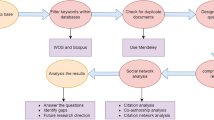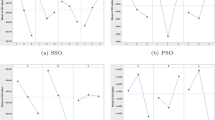Abstract
A suitable initial value of a good (close to the optimal value) scheduling algorithm may greatly speed up the convergence rate. However, the initial population of current scheduling algorithms is randomly determined. Similar scheduling instances in the production process are not reused rationally. For this reason, we propose a method to generate the initial population of job shop problems. The scheduling model includes static and dynamic knowledge to generate the initial population of the genetic algorithm. The knowledge reflects scheduling constraints and priority rules. A scheduling strategy is implemented by matching and combining the two categories of scheduling knowledge, while the experience of dispatchers is externalized to semantic features. Feature similarity based knowledge matching is utilized to acquire the constraints that are in turn used to optimize the scheduling process. Results show that the proposed approach is feasible and effective for the job shop optimization problem.
Similar content being viewed by others
References
Balas, E., Vazacopoulos, A., 1998. Guided local search with shifting bottleneck for job shop scheduling. Manag. Sci., 44(2):262–275. [doi:10.1287/mnsc.44.2.262]
Brucker, P., 1995. Scheduling Algorithms. Springer Verlag, Berlin.
Eren, T., 2009. A bicriteria parallel machine scheduling with a learning effect of setup and removal times. Appl. Math. Model., 33(2):1141–1150. [doi:10.1016/j.apm.2008.01.010]
Gao, L., 2003. Shop Scheduling with Genetic Algorithms. Tsinghua University Press, Beijing, China (in Chinese).
Giffler, B., Thomson, G.L., 1960. Algorithms for solving production scheduling problems. Oper. Res., 8(4):487–503. [doi:10.1287/opre.8.4.487]
Gonzalez-Rodriguez, I., Puente, J., Vela, C.R., Varela, R., 2008. Semantics of schedules for the fuzzy job-shop problem. IEEE Trans. Syst. Cybern. Part A: Syst. Hum., 38(3):655–666. [doi:10.1109/TSMCA.2008.918603]
Ida, K., Osawa, A., 2007. Solution of job-shop scheduling problems by an idle time shortening. Electr. Eng. Jpn., 159(2):55–63. [doi:10.1002/eej.20389]
Li, N.X., Chen, Y.W., Yang, K.W., 2008. Multi-objective flexible job shop schedule: design and evaluation by simulation modeling. Appl. Soft Comput., 9(1):362–376.
Pezzella, F., Morganti, G., Ciaschetti, G., 2008. A genetic algorithm for the flexible job-shop scheduling problem. Comput. Oper. Res., 35(10):3202–3212. [doi:10.1016/j.cor.2007.02.014]
Togan, V., Daloglu, A.T., 2008. An improved genetic algorithm with initial population strategy and self-adaptive member grouping. Comput. & Struct., 86(11–12):1204–1218. [doi:10.1016/j.compstruc.2007.11.006]
Tsai, J.T., Chou, J.H., Liu, T.K., 2006. Tuning the structure and parameters of a neural network by using hybrid Taguchi-genetic algorithm. IEEE Trans. Neur. Networks, 17(1):69–80. [doi:10.1109/TNN.2005.860885]
Tsai, J.T., Liu, T.K., Ho, W.H., Chou, J.H., 2008. An improved genetic algorithm for job-shop scheduling problems using Taguchi-based crossover. Int. J. Adv. Manuf. Technol., 38(9–10):987–994. [doi:10.1007/s00170-007-1142-5]
Watanabe, M., Ida, K., Gen, M., 2005. A genetic algorithm with modified crossover operator and search area adaptation for the job-shop scheduling problem. Comput. Ind. Eng., 48(4):743–752. [doi:10.1016/j.cie.2004.12.008]
Watanabe, M., Ida, K., Gen, M., 2006. Active solution space and search on job-shop scheduling problem. Electr. Eng. Jpn., 154(4):61–67. [doi:10.1002/eej.20185]
Zhang, C.Y., Li, P.G., Guan, Z.L., Rao, Y.Q., 2007. A tabu search algorithm with a new neighborhood structure for the job shop scheduling problem. Comput. Oper. Res., 34(11):3229–3242. [doi:10.1016/j.cor.2005.12.002]
Zhang, C.Y., Guan, Z.L., Liu, Q., Shao, X.Y., Li, P., 2008. New scheduling type applied to solving job-shop scheduling problem. Chin. J. Mech. Eng., 44(10):24–31. [doi:10.3901/JME.2008.10.024]
Author information
Authors and Affiliations
Corresponding author
Additional information
Project supported by the Important National Science and Technology Specific Projects (No. 2009ZX04014-031), the Science and Technology Pillar Program of Zhejiang Province (No. 2009C31120), and the Zhejiang Provincial Natural Science Foundation of China (No. Z1080339)
Rights and permissions
About this article
Cite this article
Chen, J., Zhang, Sy., Gao, Z. et al. Feature-based initial population generation for the optimization of job shop problems. J. Zhejiang Univ. - Sci. C 11, 767–777 (2010). https://doi.org/10.1631/jzus.C0910707
Received:
Accepted:
Published:
Issue Date:
DOI: https://doi.org/10.1631/jzus.C0910707




